Inflight Magazine of Brussels Airlines
Welcome to the Inflight Magazine of Brussels Airlines
Vive Nice!
As the capital of the French Riviera celebrates 150 years of being French, Carolyn Reynie r marks the occasion by exploring some of the lesser-known history, architecture and culture of Vieux Nice
Image 4Corners, Getty Images, Alamy
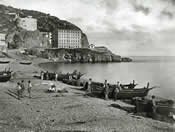 On 14 June 1860, the flag of the Duchy of Savoy and Kingdom of Sardinia was run down the flagpole atop the palace of the Sardinian Kings in Vieux Nice (old town) and replaced with the tricolour. For the previous five centuries, Nice and its county had belonged, with a couple of exceptions, to the Duchy of Savoy.
On 14 June 1860, the flag of the Duchy of Savoy and Kingdom of Sardinia was run down the flagpole atop the palace of the Sardinian Kings in Vieux Nice (old town) and replaced with the tricolour. For the previous five centuries, Nice and its county had belonged, with a couple of exceptions, to the Duchy of Savoy.
The capital, originally Chambéry, was transferred to Turin in 1563 – which is why the architecture and culture of Nice have more to do with Piedmont than Provence – and the royal title the ducal dynasty had been hankering after was eventually acquired in the 18th century, when the duke of the day captured Sicily, was made to give it back and, in 1720, received Sardinia in exchange.
Hidden holiness
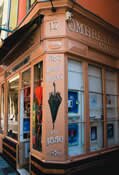 Talking of titles, the Belgian writer Count Maurice Maeterlinck lived in a villa he called Les Abeilles when he first arrived in Nice after the outbreak of WWI. My great-aunt Léonore was his cook, and often went to the Cours Saleya market to shop. Most people know this famous flower and food market, but few visit the Black Penitents’ Chapelle de la Miséricorde halfway down the Cours – the jewel in the baroque crown of Vieux Nice (more on this later). In the sacristy, you can see two masterpieces of the Vièrge de Miséricorde by the 15th-century Niçois primitive painters Jean Mirailhet and Louis Bréa. Today, apart from Sunday Mass, you can only visit this and Nice’s other Penitent chapels on Tuesday afternoons – so make sure you’re available.
Talking of titles, the Belgian writer Count Maurice Maeterlinck lived in a villa he called Les Abeilles when he first arrived in Nice after the outbreak of WWI. My great-aunt Léonore was his cook, and often went to the Cours Saleya market to shop. Most people know this famous flower and food market, but few visit the Black Penitents’ Chapelle de la Miséricorde halfway down the Cours – the jewel in the baroque crown of Vieux Nice (more on this later). In the sacristy, you can see two masterpieces of the Vièrge de Miséricorde by the 15th-century Niçois primitive painters Jean Mirailhet and Louis Bréa. Today, apart from Sunday Mass, you can only visit this and Nice’s other Penitent chapels on Tuesday afternoons – so make sure you’re available.
On Rue de la Préfecture, the main artery of the old town, Gino Bestagno sells umbrellas, parasols and walking sticks in his tiny old-fashioned corner shop. You’ll also find the Aladdin’s cave that is the Caves Caprioglio here, where you can still buy litres of rouge and rosé du Var direct from the vats. As you wander through the narrow lanes, shaded from the sun, look out for the handful of ancient stone door lintels engraved with ‘HIS’ (Iesu Homini Salvator) – they’re testament to the Jesuits’ presence here since the early 17th century.
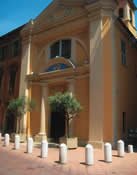 In Rue Réparate, Maison Barale makes ravioli Niçois (tiny chard-filled squares) and gnocchi, those quintessential Niçois potato dumplings. The cuisine nissarde is not a rich one. It’s all in the name; apart from the narrow maritime coastal strip, the Alpes-Maritimes department is, well, alpine – steep limestone gorges far removed from the plentiful pastures of Provence. What the department does have to offer is always on display at the Fête de la San Bertoumieu, which takes place in small squares on 4-5 September. Descended from the Nice Fair, this is a celebration of Niçois, where craftsmen and producers display their wares and traditional music and games are played.
In Rue Réparate, Maison Barale makes ravioli Niçois (tiny chard-filled squares) and gnocchi, those quintessential Niçois potato dumplings. The cuisine nissarde is not a rich one. It’s all in the name; apart from the narrow maritime coastal strip, the Alpes-Maritimes department is, well, alpine – steep limestone gorges far removed from the plentiful pastures of Provence. What the department does have to offer is always on display at the Fête de la San Bertoumieu, which takes place in small squares on 4-5 September. Descended from the Nice Fair, this is a celebration of Niçois, where craftsmen and producers display their wares and traditional music and games are played.
Beautiful baroque
The Holy Shroud, le Saint Suaire, which came into the possession of the Dukes of Savoy in 1452, spent a few years in Nice during the 16th century before being transferred to Turin. In the small neoclassical Red Penitents’ chapel of the Saint-Suaire (Rue Jules Gilly), there’s a fine baroque painting of Christ’s burial by Niçois artist Jean-Gaspard Baldoino. In fact, Vieux Nice is choc-a-block with baroque. In a tiny square stands the Église de Gésu, the model for all the local baroque churches, while hidden away in the heart of the old town you’ll find the White Penitents’ chapel of the Sainte-Croix, which has, unusually for a place of worship, a rich floral decoration. The order tries to maintain the religious culture of the county by celebrating certain Masses in Niçois.
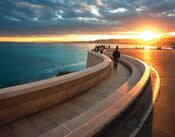 Treasure hunt
Treasure hunt
The newly renovated Place Garibaldi (named after the Niçois’ favourite son) is the apex of the triangle that forms the old town. In Rue Catherine Ségurane, running down towards the port, you’ll find Tout pour la Cave, selling glass bottles, jars and cork stoppers that you never knew you needed, in all shapes and sizes. This area is a delight for the chineur (bargain hunter): here and in neighbouring streets you’ll find over 100 antique and second-hand shops.
Around the port, currently undergoing a €120m embellishment, characteristic Niçois buildings are painted in sunny shades of ochre, from aïoli yellow to rusty rouille. Admire, too, the appealing symmetry of the Place Ile de Beauté, due to the Consiglio d’Ornato’s urban town planning laid down by Turin in the 1830s. The two identical buildings either side of the church of Notre-Dame du Port were actually constructed years apart. Head west, following the sea around Rauba Capeu, and you’ll come to the Quai des Etats-Unis (with the Cours Saleya behind). The Centre du Patrimoine here has a range of leaflets on all aspects of Niçois life and organises excellent guided tours, which can be arranged in English with advance notice.
To round off your ramble, pick up a pan bagnat – a round bread roll sliced in half, soaked in olive oil and filled with crudités, egg, tuna or anchovy – and that sine qua non of Nissarde cuisine: small black cailletier olives. Then hop on the bus (no. 22 or 15) up to Cimiez for a picnic under olive trees in the pretty gardens (where the Nice Jazz Festival takes place from 17-24 July, www.nicejazzfestival.fr). In the Franciscan monastery here there are two more Bréas, while the monastery garden is a joy. You’ll be left recalling the words of Menica Rondelly, author of Nice’s unofficial anthem: ‘Viva, viva, Nissa la bella’.
Niçois necessities
More musts while in the city
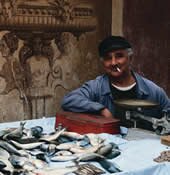 Local delicacies
Local delicacies
Socca is a large pancake made from chickpea flour; visit Nissa Socca (7 Rue St-Réparte, tel. ) and Chez René (1 Rue Pairolière, tel. ).
For estocaficada – pieces of cod cooked in olive oil with tomato, potato, onions, peppers and Niçois olives – head to Lou Balico (20-22 Avenue St-Jean-Baptiste, tel. ) or Acchiardo (38 Rue Droite, tel. ).
Other specialities include pissaladière (pizza), petits farçis Niçois (stuffed vegetables) and tourte de blettes (Swiss chard tart). Try La Table Alziari (4 Rue François Zanin, tel. ) and Café Restaurant de la Bourse (15 Place St. François, tel. ).
Art and history
The Musée Masséna (65 Rue de France, tel. ) covers the history of Nice from the 19th century to the end of the 1930s.
A photogram exhibition at Théâtre de la Photographie et de l’Image (27 Boulevard Dubouchage, tel. ) runs till 5 September.
The Galerie des Ponchettes (77 Quai des Etats-Unis, tel. ) hosts Face à Faces, black-and-white photos by Franck Fernandes of artists who’ve worked in Nice, until 19 September.
To market
The tiny fish market in Place Saint-François (right) in the old town sells the catch brought in by local fishermen.
In the Cité Marchande on Rue de la Buffa you’ll find Gabriel selling freshly ground coffee, local honey and olive oil; my favourite fishmonger, Christophe; and a super range of cheese chez Claude.
The Thursday morning Charles Ehrmann market (take the no. 9 or 10 bus west) is hugely popular with the North African communities, with colourful clothes and fabulous fabrics à petit prix along with shoes, sunglasses and socca.
FR Vive Nice !
Au moment où la capitale de la Riviera française est en train de célébrer les 150 ans de son rattachement à la France, Carolyn Reynier profite de l’occasion pour explorer des sites inédits dans la ville ainsi que des fragments exceptionnels du patrimoine archit ectural et culturel
Le 14 juin 1860, le drapeau du Royaume de Sardaigne fut remplacé par la bannière tricolore du Vieux Nice. Durant les cinq siècles qui précédèrent, la ville vécut sous domination du Duché de Savoie – tout comme son comté – et la capitale fut transférée à Turin en 1563. On comprend donc que l’architecture et la culture de Nice ont plus en commun avec le Piémont qu’avec la Provence.
Lorsqu’ils commencent leur visite dans le centre, la plupart des visiteurs connaissent le célèbre marché du Cours Saleya – mais peu par contre s’aventurent jusqu’à la Chapelle de la Miséricorde, dite des Pénitents noirs. C’est un vrai chef-d’œuvre baroque, mais mis à part la messe du dimanche, on ne peut visiter l’église que les mardis après-midi. Dans la rue de la Préfecture, toute proche, Gino Bestagno vend des parapluies et des cannes de marche dans sa petite boutique d’époque, tandis que dans les Caves Caprioglio vous pouvez acheter des lites de vin à la cuve. Et dans la rue Réparate, la Maison Barale prépare de délicieux ravioli niçois.
Dans le Vieux Nice, l’histoire a laissé ses marques avec une multitude d’édifices baroques. L’Église de Gésu est le modèle par excellence des églises baroques de la région. La Chapelle Sainte-Croix des Pénitents Blancs, quant à elle, présente une étonnante décoration florale à l’intérieur et la chapelle du Saint-Suaire contient une magnifique peinture baroque de la sépulture du Christ.
La Place Garibaldi, nouvellement rénovée, est le point culminant du triangle formé par la vieille ville. Le quartier fait le délice des chineurs. Autour du port, des bâtiments niçois typiques sont peints dans des tonalités d’ocres lumineuses. Si vous allez vers l’ouest, jusqu’au Quai des Etats-Unis, le Centre du Patrimoine (tél. ) organise des tours guidés.
Terminez votre balade par un pan bagnat – un pain rond imbibé d’huile d’olive, garni de crudités, d’oeufs, de thon ou d’anchois – et sautez dans le bus direction Cimiez, pour un pique-nique dans les jardins. Là, l’hymne (non-officiel) du comté de Nice vous reviendra sans doute en tête : ‘Viva, viva, Nissa la bella’.
NL Vive Nice!
Ter ere van zijn 150ste verjaardag van het tot Frankrijk behoren, gaat Carolyn Reynier op zoek naar de minder bekende geschiedenis, architectuur en cultuur van deze hoofdstad van de Franse Rivièra
Op 14 juni 1860 werd in Vieux Nice (de oude stad) de vlag van het Koninkrijk Sardinië vervangen door de tricolore. De voorbije 5 eeuwen behoorden de stad en het graafschap tot het Hertogdom Savoye, met Turijn sinds 1563 als nieuwe hoofdstad. Dit verklaart waarom de architectuur en cultuur van Nice veel meer doen denken aan Piedmont dan aan de Provence.
In het centrum kennen de meesten de beroemde Cours Saleya markt, maar weinigen krijgen de kans om de Chapelle de la Miséricorde van de Zwarte Penitenten te bezoeken. Het gaat om een juweeltje uit de barrok dat je, behalve tijdens de zondagmis, enkel op dinsdagnamiddag kunt bezoeken. Op de nabijgelegen Rue de la Préfecture verkoopt Gino Bestagno in zijn piepkleine, ouderwetse winkeltje paraplu’s en wandelstokken. Bij Caves Caprioglio kan je dan weer terecht voor liters wijn uit vaten. In de Rue Réparate smul je bij Maison Barale van heerlijke ravioli Niçois.
In Vieux Nice vind je verrassend veel barrok. De Église de Gésu staat model voor alle plaatselijke barrok kerken en in het Witte Penintenten kerkje van Sainte-Croix ontdek je een barrok schilderij dat de begrafenis van Christus afbeeldt.
De onlangs gerenoveerde Place Garibaldi vormt de top van de driehoekstructuur van de oude stad. Deze buurt is een paradijs voor de chineur (koopjesjager). In de buurt van de haven vind je typische plaatselijke gebouwen geschilderd in zonnige okertinten. Je kunt ook westwaarts gaan richting Quai des Etats-Unis, waar het Centre du Patrimoine (tel. ) geleide bezoeken organiseert.
Rond je bezoekje geslaagd af en koop een pan bagnat – een met olie doordrenkte broodrol gevuld met rauwkost, ei, tonijn of ansjovis – en spring op de bus naar Cimiez voor een picknick in de tuinen. Je zult je de onofficiële hymne van Nice zeker blijven herinneren: ‘Viva, viva, Nissa la bella’.
Leave a Reply
